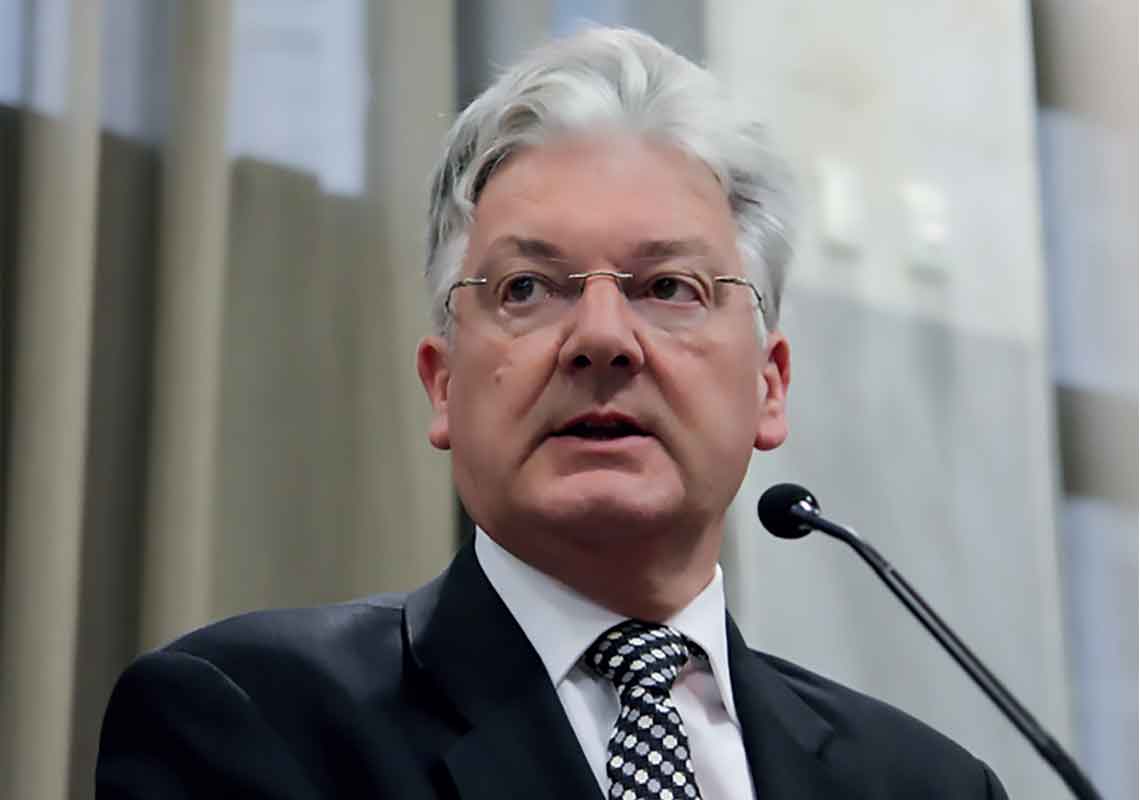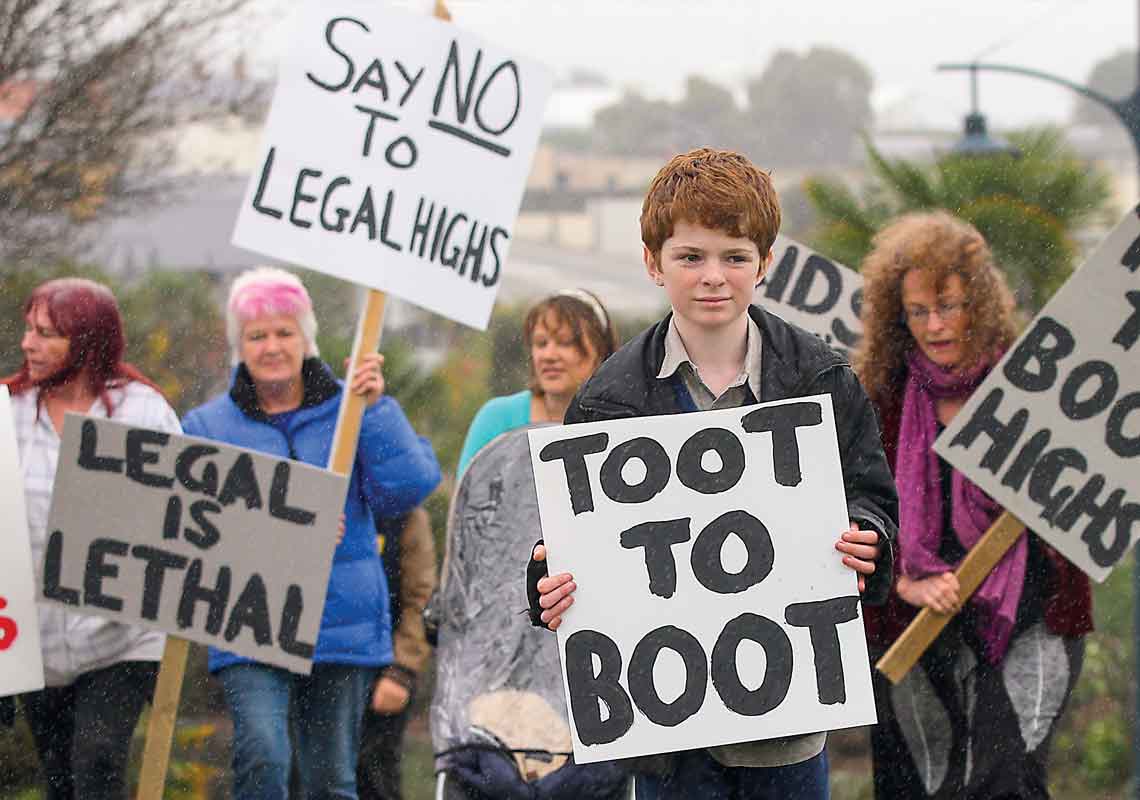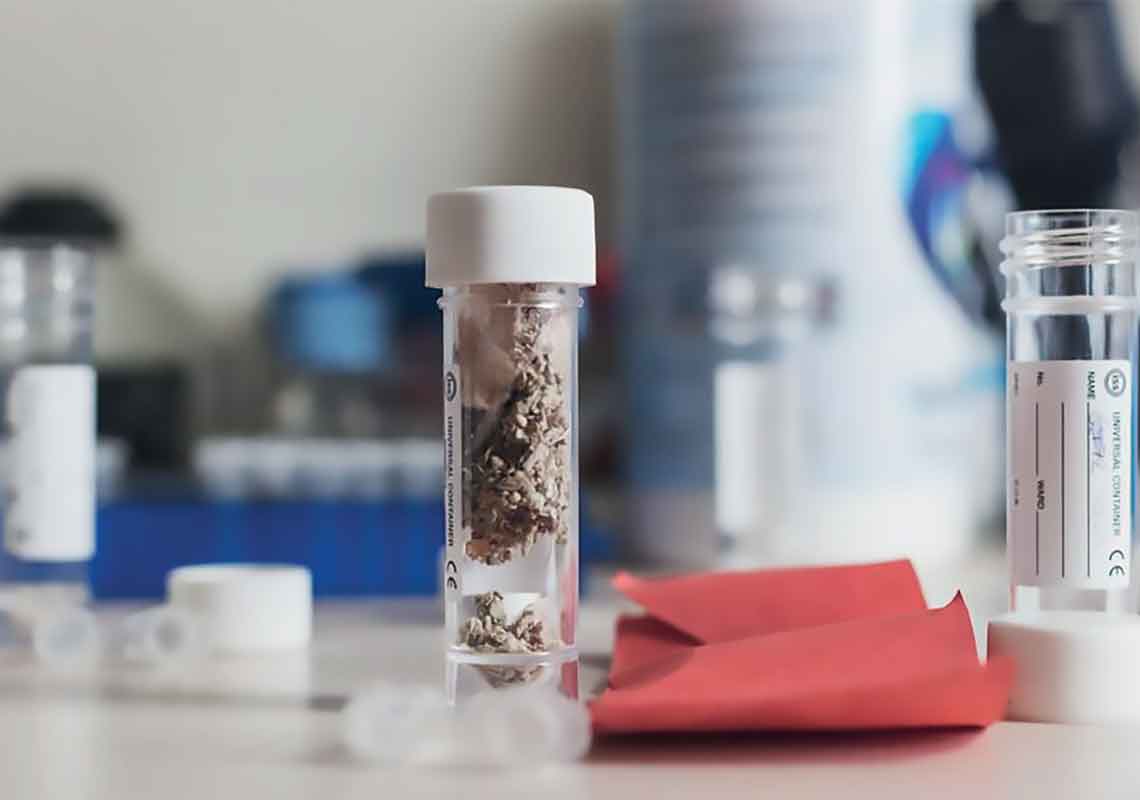We should have known

The recent extraordinary spate of 20 deaths linked with synthetic cannabinoid use could have been avoided. Russell Brown talked with those willing to go on the record about how we got here.
On 21 July, when the Police and the Chief Coroner’s office released a statement that seven deaths in Auckland so far that month appeared “to be linked to the use of synthetic cannabis”, the news seemed to come out of nowhere.
The statement was quickly followed by a New Zealand Herald report revealing that the city’s St John ambulance service was attending to as many as 20 people a day suffering “life-threatening effects” from using “synnies”. At the same time, social media was dotted with accounts from members of the public who had stepped in to call for emergency aid after finding street people in Auckland CBD behaving bizarrely and suddenly collapsing unconscious.
Public health officials fretted that New Zealand streets might finally have seen the arrival of the powerful synthetic opioid fentanyl. The original joint statement had indicated “the possibility that some products can also be laced with other unknown chemicals”, and a senior officer at the Avondale Police station told the press of test results “which show things like fly spray and weed killer” in illicit synnies.
All of that was wrong or irrelevant.
At the time of writing, nearly two months after the original headline, another Police statement has revealed that at least 20 recent deaths are likely to be associated with synthetic cannabinoid use and that the chemical implicated in most cases is AMB-FUBINACA – something the Police have had at least good reason to suspect since June, when a major Customs seizure was made.
Incident clusters have spread beyond Auckland, in keeping with the “zombie outbreak” pattern observed in other countries, and the St John ambulance service has attended to around 700 cases since mid-June.
The harsh truth is that the crisis did not come out of nowhere. It was developing even before the 2014 amendment to the Psychoactive Substances Act took all synthetic cannabinoid products off retail shelves. And for a range of reasons, almost no one saw it happening or, in some cases, did not wish to see.
“I wouldn’t say we took our eye off the ball,” says Peter Dunne, the Associate Health Minister who drafted the Psychoactive Substances Act and fronted the critical amendment in the midst of an election campaign. “I think that more what happened was that, as a result of the 2014 changes, there was a prevailing feeling that we had sorted the problem.

Peter Dunne
“There was a certain dishonesty there. I fought to maintain the integrity of the Psychoactive Substances Act. The National Party fought to get psychoactive substances off the shelves, and they weren’t too fussed about the integrity or otherwise of the Act.
“So once the situation arose where effectively everything was banned, I think they said, well, that’s the problem resolved. So to that extent, you could say that was taking the eye off the ball or just assuming that it had all just passed by.
“I continued doing my work, but it was in an environment where, as far as the National Party was concerned, and in particular the leadership of the National Party, that had all been resolved. It was off the shelves, and we’d dealt with it. ‘Yeah, yeah, you can get your Act in place, but frankly that doesn’t matter. The stuff’s off the shelves, and that’s all that counts’.”
In April 2015, I visited ESR for a follow-up interview about the results for a party pill we’d had the agency test for a Matters of Substance story. As I spoke to two ESR scientists, another story emerged.
Dunne had recently assured news media that Police had told him there was only a “comparatively small” underground market in synthetic cannabis products, trading in products stockpiled from the old legal regime. But what the scientists said about recent testing of products seized by the Police and Customs painted a very different picture of synthetic cannabinoids.
...once the situation arose where effectively everything was banned, I think they said, well, that’s the problem resolved.
Peter Dunne“There are significantly more,” ESR forensic analyst Hannah Partington told me, “and it’s not consistent. They change.”
“It’s new ones,” confirmed senior forensic scientist Jenny Sibley. “We had a very new one last week. It was in our data library, so we could identify [it] that way, but we could not find any published data in scientific published papers. It takes ages for them to catch up.”
Both agreed that a recent large Customs seizure of JWH-018, one of the original “legal highs” banned by the Minister in November 2012, was an exception. Of 10 synthetic cannabinoids identified and two provisionally identified, only three had ever been issued with interim product approvals – and thus could plausibly be “leftovers” from the period of regulated sale under the Psychoactive Substances Act’s interim regime. Five of the 12 were entirely new.
Synthetic cannabinoids were a separate issue to the main Matters of Substance story, so I posted that part on my own website. On the day it was published, an ESR communications manager emailed to ask if the test report noted in my “excellent post” could be shared with the Ministry of Health and Police.
Then a communications flurry began. Dunne himself wrote to debate the conclusions in the post. But the evidence seemed undeniable. The market in synthetic cannabinoids had not ceased when they left retail shelves the year before. It was not trading in leftover stock, and it seemed to be increasingly filled with entirely new chemicals.

Protesters hold up placards proclaiming Say no to legal highs, Toot to boot and Legal is lethal - Protesters show their opposition to legal highs being sold in Timaru dairies in 2014.
Tania never even saw a blip in supply. A 27-year-old Mäori woman from West Auckland, three months in recovery when I spoke to her, she began using synthetic cannabis in 2014, right at the end of the years during which the products had been sold in shops.
She started, she thinks, “because marijuana was hard to get at the time. It went pretty much dry around here. So we thought it was easier just to go to the shop – because it was legal at the time.”
And then the market went underground.
“When it was banned from the shops, it was already being sold on the streets, so we knew people who knew where to get it from.”
Her brother, her 57-year-old mother and the father of her children also started using. “No one else in my family would touch it.”
“It changed people a lot. You wouldn’t be able to do anything. You’d get knocked out then want more when you woke up. It puts you to sleep, and you don’t remember anything in that time. You could have a fit, you could stop breathing – and then wake up.”
At no point did Tania or any of her fellow users know the contents of what they were buying, but they were able to tell that some “strains” would be stronger than others.
“There was no name for all the strains you could get – it was just synthetic cannabis – but you could smell the difference in the strains. Some would smell like methylated spirits – the stronger the smell, the stronger it was. But there was a crushed pill that was in the stuff sometimes too, and you could see that through the leaf. That was more like a ‘body stone’, but it wouldn’t knock you unconscious unless you smoked more than three or four cones.”
At one point, Tania was spending $500 a week on synnies “and I didn’t always have $500 coming in”. She lost weight, “and my kids just didn’t like me on it”.
“Some people, it would just affect them by putting them to sleep. But my mother was smoking it too, and it would make her have seizures, but she’d wake up thinking she was all right and have more. I used to say to her, you don’t know what strain you’ve got, so just be careful with it. Because even one puff would make her look paralysed and she’d start talking to herself.”
Tania says her mother suffered head injuries several times during seizures.
She says the effects were stronger if synthetics use was accompanied by alcohol or other drugs.
“That stuff is pretty wicked when you’re on P. I’ve tried it, and it makes you really zombie-looking, you can’t handle any facial expressions. It’s ugly. I videoed myself to see what I was like on it with the crack, and it made me want to stop.
“Mixing alcohol with it is also a big no-no, I think. It can make you vomit after the seizures. Sometimes I’d be put to bed and not even know what had happened. I’d just wake up and think ‘How did I get here?’”
Supply usually came through the equivalent of tinny houses, and the sellers were generally in their 30s or 40s. Some may have had gang connections, others were simply dealing to support their own use.
“They don’t care how much they’re putting in it and what it’s doing to the buyers, because the buyers in the end are making their own choices by buying it and taking it. So that’s what I guess makes the dealer so proud of making it – because [they’re] making a buck and they’re getting what they want.”
This year’s flurry of media reports about deaths did not go unnoticed, she says.
“I had one friend ask, ‘Do you know if it’s my stuff that’s killing everybody?’”
Quite clearly, people aren’t mixing it right... There does seem to be a complete ignorance in terms of what the dosage should be...
Kevan WalshTania and her mother eventually quit by making sure there was never any in the house. She’s happy to be getting better. “I was only smoking it because everyone else was smoking it.”
Use is still widespread in her community, she says.
“Who’s using it? Pretty much the whole of Henderson that has a drug problem, and from Wellington up to the Far North.”
Henderson-Massey Local Board member and Unitec lecturer Paula Bold-Wilson led a campaign to get synthetic cannabis products off the shelves in West Auckland in 2014, when she worked at the Waitemata Community Law Centre. She’s deeply disappointed by what happened after the ban.
“At the time we were campaigning, we were trying to raise awareness of how many people were still extremely sick afterwards and that actually the government had a responsibility to tidy up the mess of those who’d become addicted through those products being legal in our community. But they left the community to tidy up the mess really.”
Bold-Wilson says the campaigners “always knew that the synthetics would go underground. We were pretty realistic about that. It’s similar to P, it’s going to be sold. But you have to do education stuff, you have to raise awareness around the risks of smoking this product.”
She says another thing hasn’t changed since the ban: who’s suffering.
“What was really upsetting during the selling of those products was that, at the end of the day, it was Mäori being hurt by them. And that’s even more relevant today. Our people are selling to our people.”
It wasn’t only officialdom that didn’t see the crisis developing. KnowYourStuffNZ’s Wendy Allison, who spent last summer testing drugs on demand at festivals and parties, says no synthetic cannabis was presented to her team for testing, and no cannabinoids were found in any other form. Wellington Hospital toxicologist Dr Paul Quigley notes that hospital EDs in some regions have seen no synthetics-related presentations since 2014.
Robert Steenhuisen, Auckland Regional Manager of Community Alcohol and Drug Services (CADS), says his service is seeing markedly fewer presentations related to synthetic cannabinoid use this year than when they were legally sold – but also that it’s seeing a different kind of user. In 2013, users generally only had a problem with the one drug – now, their use is likely to be mixed in with other drugs, such as depressants.
All this is in keeping with the experience in other countries, where synthetic cannabinoid use is concentrated among the marginalised and dispossessed. These are not recreational drug users.
The Auckland crisis was also identical to outbreaks elsewhere in the world at the same time. The week before the news broke in New Zealand, Police in Fort Wayne, Indiana, reported 20 overdoses in 24 hours, attributed to a bad batch of “spice”. The week before, there were 150 overdoses – many requiring intensive care admission – in Lancaster County, Pennsylvania, where the director of emergency services speculated that “some bad K2 has hit the street”.
Few, if any, of these cases involved adulterants, and one chemical in particular was implicated: AMB-FUBINACA.
An article published this year in New England Journal of Medicine described how researchers studying the so-called “zombie outbreak” identified the chemical first in products seized by Police and then – after working backwards to determine what its metabolites would be – in the blood of users. It concluded: “The potency of the synthetic cannabinoid identified in these analyses is consistent with strong depressant effects that account for the ‘zombielike’ behaviour reported in this mass intoxication. AMB-FUBINACA is an example of the emerging class of ‘ultrapotent’ synthetic cannabinoids and poses a public health concern. Collaboration among clinical laboratory staff, health professionals, and law enforcement agencies facilitated the timely identification of the compound and allowed health authorities to take appropriate action.”
So why, when Police and doctors a year before in New York had worked together to identify the culprit chemical, was everyone in the dark in New Zealand? Then-Minister Dunne was clearly unimpressed, telling reporters that his office had had “less than a couple of hours’ notice” of the police and coroners’ joint statement. “There’s been no contact with my office at all on this. We need to be working together on this.”

samples of synthetic cannabis in a laboratory
It fell, again, to ESR to release accurate information about the drug involved and, subsequently, the really bad news: the dosing in synthetic cannabis in New Zealand was between 10 and 30 times higher than that identified in the benchmark Brooklyn case.
“Quite clearly, people aren’t mixing it right,” ESR Forensic Chemistry Manager Kevan Walsh told RNZ. “There does seem to be a complete ignorance in terms of what the dosage should be, and that’s not surprising because there really is no information given out. This is not a product that we can recall ... this is something prepared in people’s backyards in terms of putting out plant material and adding the chemical to it.”
The sheer potency of AMB-FUBINACA warrants emphasis. Posters to “psychonaut” forums on the internet describe strongly effective vaporised doses of as little as 100 micrograms – that’s the potency of LSD. And it means that a kilogram of AMB-FUBINACA – US$2,500 from a Chinese factory – contains at least 10,000 doses.
There were some indications of what was going on. The Illicit Drug Monitoring Survey (IDMS) conducted by Massey University’s SHORE Centre picked up the shift to the black market. The most recent IDMS report, published in April this year, notes a decline in the use and availability of synthetic cannabinoids since the 2014 retail ban (notably among users of party drugs such as MDMA) but also an increase in strength.
The results of that survey only go up to 2015 – it’s no kind of early warning system – but the survey’s director, Dr Chris Wilkins, says the reported increase in potency “seems consistent with the problems we’ve been having recently. The black market products were quite a bit more powerful than what had previously been around under the Psychoactive Substances Act.”
Users tended to be younger people in more deprived parts of Auckland. “They’re definitely not ecstasy users or party drug users and maybe not even methamphetamine users.”
IDMS and its partner survey NZADUM (New Zealand Arrestee Drug Use Monitoring) also picked up a decline in both the use and availability of natural cannabis. Some users liked synthetic products because they allowed the passing of workplace drug tests, Wilkins says, but that doesn’t explain why overall availability of natural cannabis would decline.
“One explanation might be that the people previously involved in cultivating cannabis have moved to synthetic cannabinoids because they’re much easier to produce. You don’t have to cultivate them for four months and then have a chance of the Police swooping in. The fact that natural cannabis availability is declining indicates it’s coming from the supply side, so someone previously involved in producing natural cannabis doesn’t do it any more.”
We won’t be able to find out more from the two surveys: funding for them (largely from the Police budget) was cancelled recently. Wilkins admits he finds that frustrating.
“Part of the problem with drug policy in this country is that they’ve got no research so they don’t know what’s going on. That’s becoming more and more clear to me. So they tend to rely on the media – and synthetic cannabinoids was a classic example of that.”
He compares it to SHORE’s experience in tracking the methamphetamine market.
“In the last couple of years, we were picking up all this increased meth use – frequency of use, availability, lower prices. In 2014, people were sceptical, but as the seizures went up to massive amounts, it demonstrated the value of this sort of research. But when it came to the last one, they just didn’t want to release it.
“We were too successful. You end up reporting something that people don’t want to hear.”
The spate of headlines in July was followed by news reports that progress towards the early warning system (EWS) promised two years ago in Dunne’s National Drug Policy would be expedited. The bad news: there’s no specific budget for that either.
A Ministry of Health response to questions from Matters of Substance says “some funding” for a “scoping project” has been received from the 2016 Proceeds of Crime funding round and the Ministry is still “pursuing funding to support the development, implementation and ongoing maintenance of the system”.
A question about what research and information on the problem is currently being gathered was deflected to district health boards, “as the responses are being led by them”. The Auckland District Health Board refused to make any comment or to allow its specialists to be interviewed.
One potential partner in an EWS, Associate Director of Auckland University’s Centre for Addiction Research Dr David Newcombe, is happy to talk.
“It’s not a real thing,” he says of the nascent EWS. “Information is being collected. ESR collects information about the samples they are sent, albeit within the restraints of coronial inquests and that sort of stuff. Ambulance officers also collect information. But the issue is what they do with that information, where that information is sent to for some sort of decision around what we do with it.
“I’m often asked whether an early warning system would have prevented these deaths, and that’s a really difficult question to answer. It possibly could have informed agencies better if they’d had that information.”
He notes that, on the day we speak, he has only learned of the updated death toll of the synthetics epidemic from news reports.
The reason that well-to-do white kids don’t have the same level of problematic drug use as poor homeless brown people is that they have access to better drugs.
Wendy AllisonNewcombe says model EWS systems (“the European one is the gold standard”) also provide information to users. But does the nature of this class of drugs – unbranded, apparently undifferentiated, critically dependent on dose, even within a batch – pose a particular problem for an EWS? Synthetic cannabinoid users are a far more disconnected group than middle-class party kids who want to know what’s in their pills.
The Ministry answered this question with a single word: “No.” Newcombe acknowledges the challenge but believes even a warning about a particularly potent batch could be useful.
Wendy Allison notes that, since testing strips that spot fentanyl disguised as other drugs have become available in North America, they are being used by homeless people where they have been distributed.
“You actually have to put some effort into getting the information out there,” she says. “But if you do go out and offer them the service – and they’re not required to go into a Police station and risk getting busted – they probably will take it up.”
There is a deeper issue here, one beyond whatever new drug has come down the pike, and that’s underlying social conditions. The people affected by synthetic cannabis here are marginalised, like many of those dying from fentanyl
overdoses in North America or the people in Northern Ireland dependent on the prescription medicine pregablin or hooked on Valium in Scotland (where fake street Valium has become a major – and deadly – problem).
Those drugs, say Allison, “all have something in common, and what they have in common is that they’re cheap to produce, they tend to be addictive and they come with associated problems. I call them drugs of the poor. They’re accessible to marginalised communities. The reason that well-to-do white kids don’t have the same level of problematic drug use as poor homeless brown people is that they have access to better drugs.”
Overseas research has found that there is another group gravitating towards synthetic cannabinoids – the very young, who lack the money for and access to “better” drugs. At least one case currently before the coroner involves a schoolchild, and Matters of Substance has spoken to intermediate children aware of slightly older peers who are using. Perhaps problems there will prompt more concerted action.
The suffering of marginalised people doesn’t make headlines the way the pains of middle-class people do. When middle-class users dropped away after the Psychoactive Substances Act
was amended, so did perceptions of a problem. So would a functioning Psychoactive Substances Act have saved lives?
“I don’t know, because you can’t always be confident about these things when you look back,” says Dunne. “But I would say with a fair measure of confidence that, had the Psychoactive Substances Act been operating as intended, we wouldn’t have had a black market. We’d have had a much clearer sense of what was becoming available – and anything that was as risky as this stuff is at the moment would have been detected long before it got anywhere near the public.”
But even that’s not an easy conclusion. The blanket-ban amendment to the Act did reduce overall use of synthetic cannabis products – but it drastically increased the level of harm to remaining users. None of this is easy.
Doing the right thing will require good knowledge of exactly what the problems are. And the thing that should worry us all is that we not only don’t know enough, we are in danger of knowing even less than we did.
Russell Brown is an Auckland-based journalist and publisher of publicaddress.net.
Recent news

Reflections from the 2024 UN Commission on Narcotic Drugs
Executive Director Sarah Helm reflects on this year's global drug conference
What can we learn from Australia’s free naloxone scheme?
As harm reduction advocates in Aotearoa push for better naloxone access, we look for lessons across the ditch.

A new approach to reporting on drug data
We've launched a new tool to help you find the latest drug data and changed how we report throughout the year.

